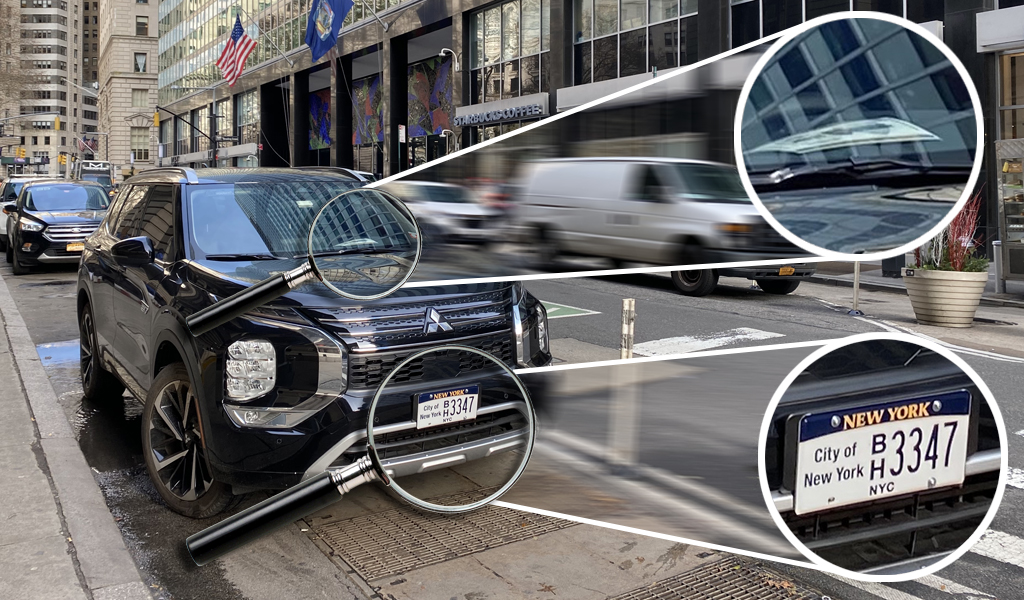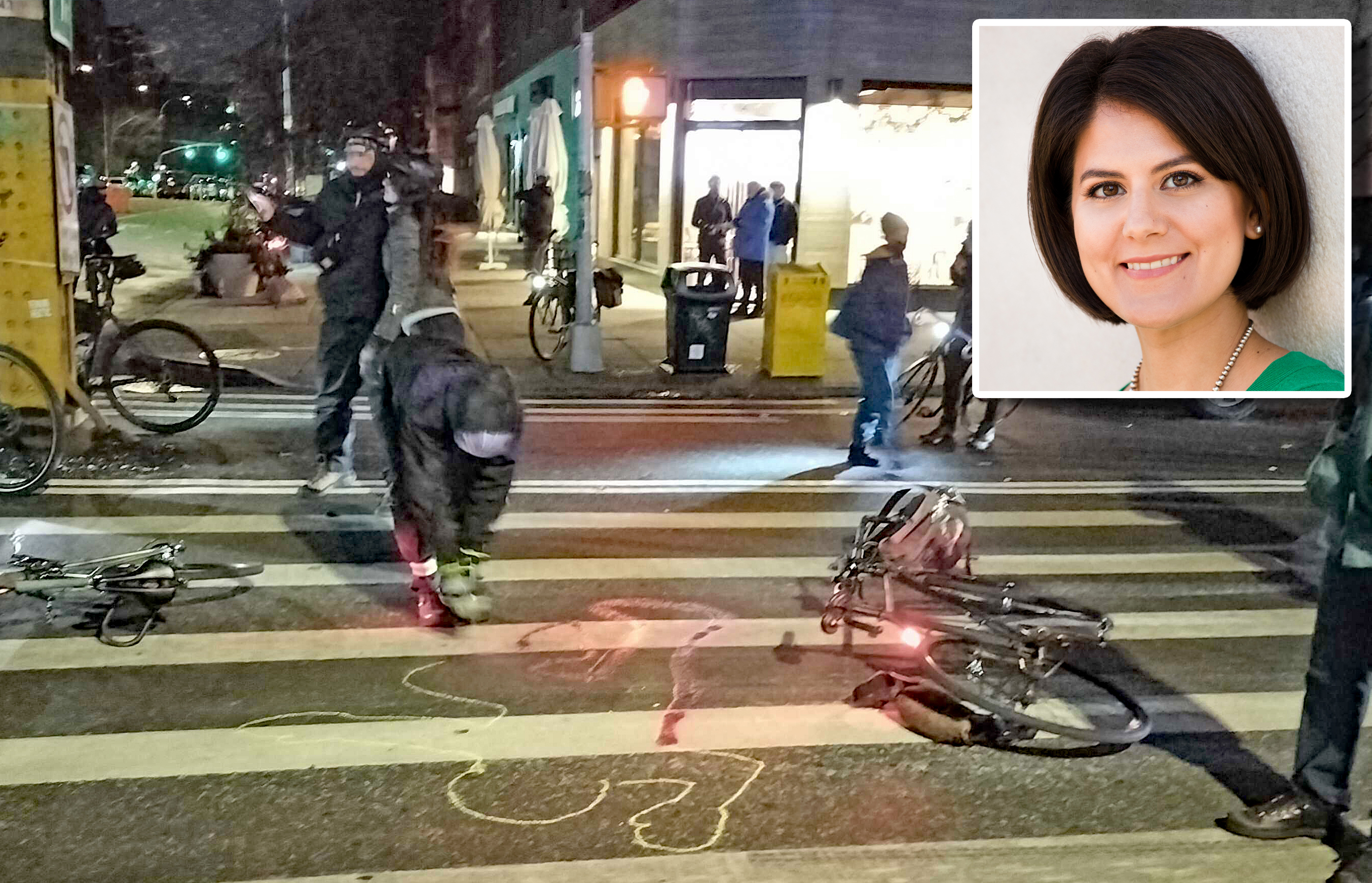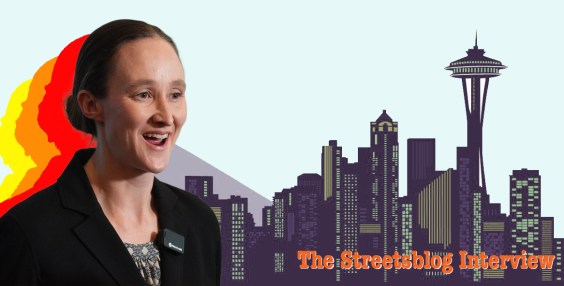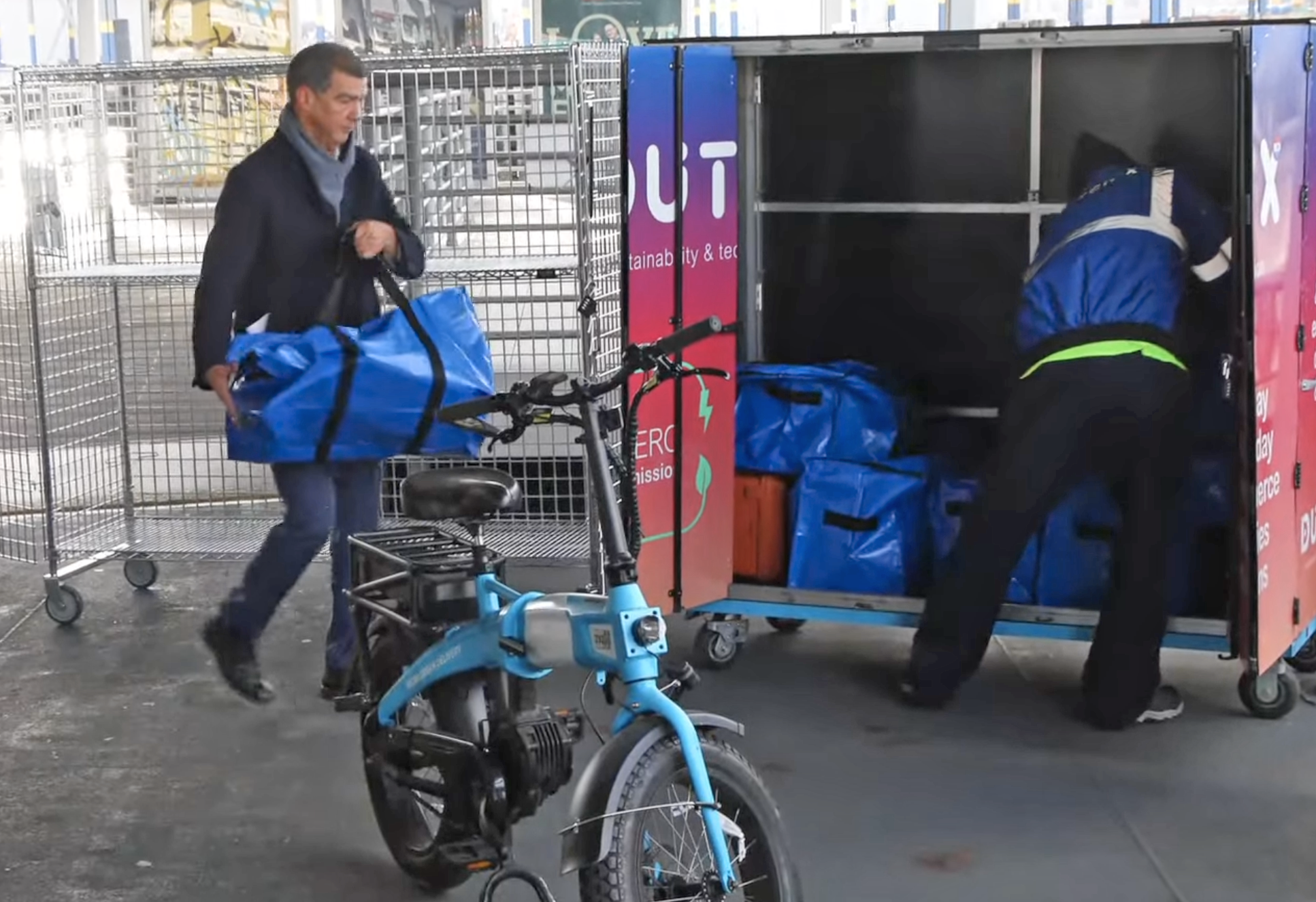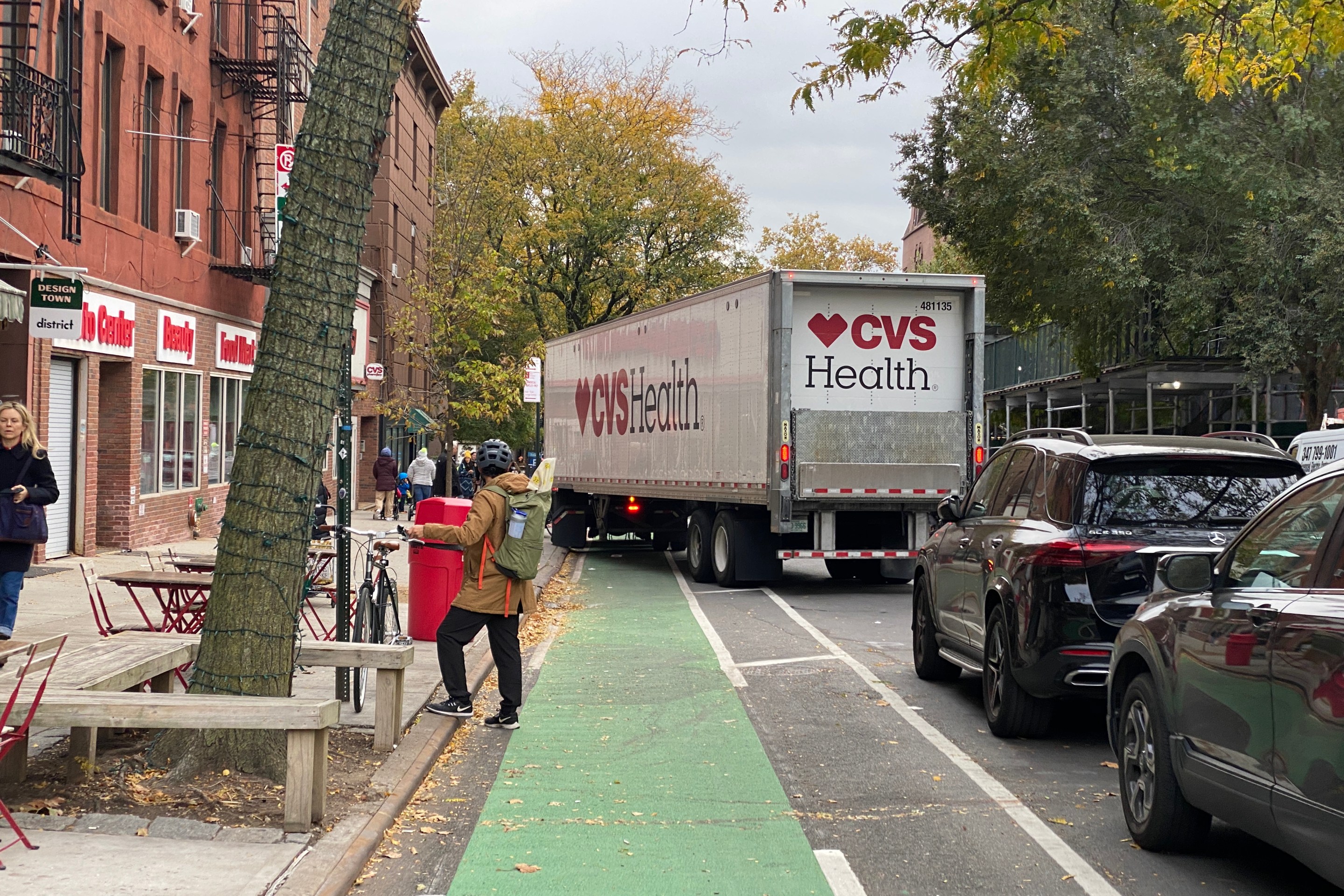On Sept. 24, the driver of a minivan hit and fatally crushed 50-year-old German tourist Alexandra Sabine Lewalter Maric as she and her husband crossed a Midtown crosswalk with the light, cops said. The reckless driver who backed up into her after he had failed to clear the intersection before the light turned red had no license, and his car had a fake plate.
But another aggravating factor may have contributed to this preventable death: the lack of "daylighting" to improve visibility 20 feet from the crosswalk.
A walk around this Midtown intersection just a few days after Maric’s killing helps illustrate why the Adams administration has stalled and obfuscated on universal daylighting: enforcing it would impact politically favored drivers, especially those whose vehicles sport special plates or placards. The next mayor must do better, because New York is coming up against the limits of what it can achieve in reducing traffic deaths and injuries without taking on free or cheap parking, both legal and illegal.
Fifth Avenue and 40th Street, where Maric was crushed, is an intersection whose visibility is chronically compromised thanks to a random collection of parked or standing vehicles.
Five days after Maric was killed, there was no trace of the violence; the city had washed away the blood. But there was plenty of evidence of the deadly chaos New York tolerates on an everyday basis on its streets.

Just behind the intersection is a no-standing zone, marked with a big red sign. But it was clogged with vehicles, as it always is. The most egregious offender, parked just short of the crosswalk and thus blocking driver visibility from behind, was a massive GMC SUV with a New York Public Library plate (right).
Just behind the library scofflaw was an indefinitely idling ice-cream truck. On the other side of the street, also illegally blocking crosswalk visibility, sat an empty battered van with no front plate and an out-of-state back plate, which a nearby sidewalk vendor indicated belonged to him.
Daylighting here — strictly enforcing a clear zone leading up to the crosswalk — would create a calmer, safer intersection. And it would save lives elsewhere in the city; we’ve all had to cross an intersection on foot, our view obstructed by a huge, parked vehicle, and hope that another vehicle won’t come whipping around. Hoboken, which hasn’t suffered a traffic death in eight years, has found that daylighting intersections reduced injuries by 30 percent. New York, too, has seen “statistically significant” safety improvements as it clears some intersections of parked cars and replaces them with low-height obstructions, including at 300 intersections last year.
But City Hall resists universal daylighting, producing a report earlier this year that claimed it wouldn’t add to safety. The report, as multiple critics have pointed out, relied on flawed methodology, including using hydrant curb space and bus stops as a daylighting proxy, although there was no evidence that such spots were empty much or most of the time.

Further, the report cited the possibility of “risk compensation”: e.g., that drivers would use greater visibility, and an illusion of an unobstructed path, to move more quickly and less attentively. But the city itself could compensate for this risk, replacing lost parking spots with low-rise planters and blocks, as it does at some high-crash intersections, and, with state authorization, adding more speed and red-light cameras to discourage recklessness.
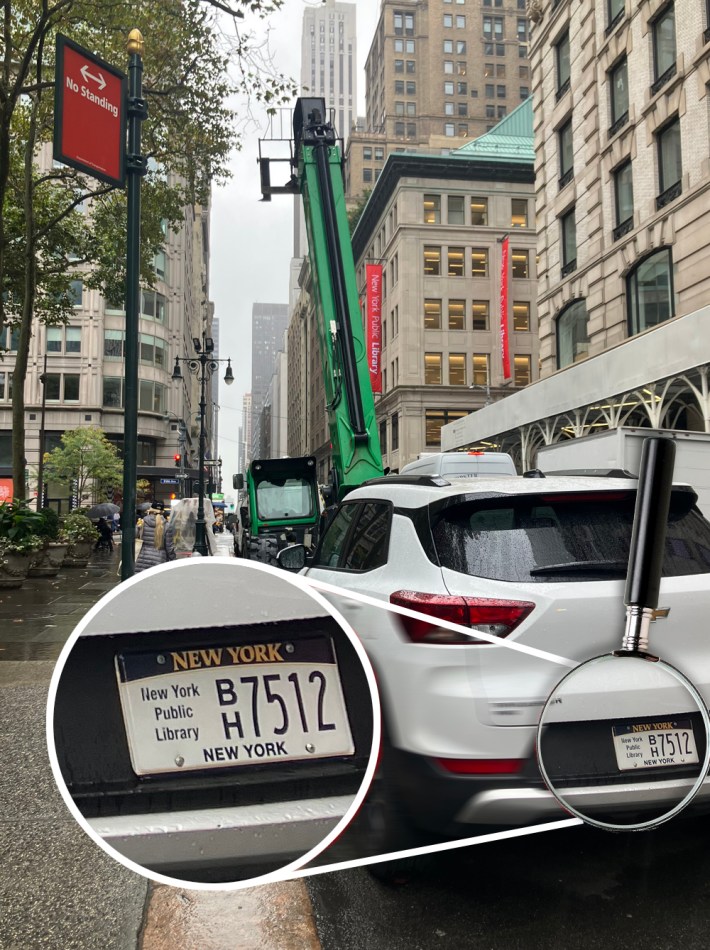
A more likely reason for City Hall reluctance is that daylighting would remove hundreds of thousands of parking spaces around tens of thousands of intersections — as many as 13,000 in some City Council districts.
Well-enforced daylighting, the only effective kind, would further remove the “shadow spaces” that government and other politically favored drivers rely on. -- e.g. all those “no standing” spaces that have become de facto parking lots near government buildings.
Walk around Lower Manhattan, downtown Brooklyn, or anywhere near a courthouse, police precinct, or government building, and you’ll see vehicles just like the Public Library vehicle: vehicles with government plates, windshield placards, or yellow vests that indicate to parking enforcers not to touch them. Similarly, a walk around any dense New York City neighborhood indicates that a big part of the ice-cream truck industry’s business model is parking and idling in or near crosswalks. (The sheriff once confiscated ice-creak trucks with millions of unpaid traffic fines, but they’re back ... and back to their old tricks.)
Conversely, a daylighting program that aggressively enforces the rules to change private-sector drivers’ behavior, but doesn't focus on government vehicles, would make it glaringly obvious to the hundreds of thousands of people who would lose their regular parking spots how differently the city treats drivers with placards or other special privileges. The city could alleviate the even tighter parking crunch that daylighting would cause, by charging drivers to park in residential neighborhoods – but the city, over multiple mayoralties, has been reluctant to do that, too.
The Adams administration isn’t alone in resisting daylighting. A City Council bill mandating it has stalled, just short of the majority it needs to pass, and far short of the number needed to override a mayoral veto. Even some Council members who generally favor street-safety improvements have balked, in part because of the loss of parking spaces, which Gale Brewer, who represents the Upper West Side, called “too many.”
Without daylighting, though, New York City, under its next mayor, will be hard-pressed to resume and accelerate the progress it saw in reducing traffic deaths and injuries since the early 1990s. From 1990 to 2018, pedestrian deaths steadily fell, from 366 in 1990 to 108 in 2017, but consistent progress since then has stalled, with 121 deaths last year. New York’s free or cheap parking, both legal and illegal, is now getting in the way of saving lives.
Should he win Gracie Mansion, Zohran Mamdani, who supports daylighting, is going to discover quickly that building a better, safer New York City will mean ending socialism for the owners and users of parked and idling vehicles.
To sign a petition supporting universal daylighting, click here.
